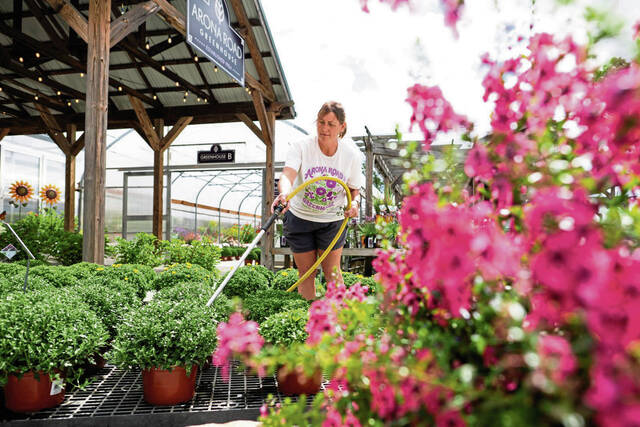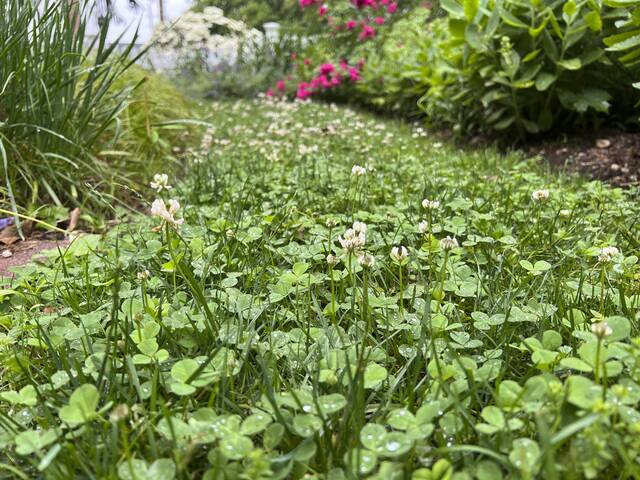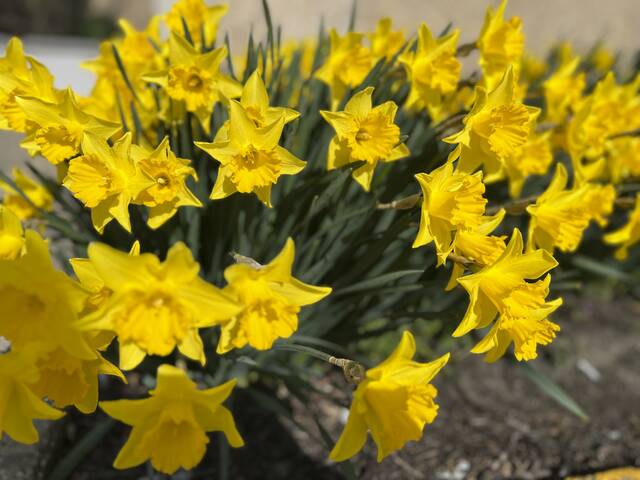Question: We have a new area to plant along the property line with our neighbors. We’d like to plant some native shrubs that produce berries because we’d like to help feed the birds in the wintertime. Do you have any suggestions of berry shrubs we can include in the border? Also, is it too late to plant them this season?
Answer: October and November are terrific months for planting shrubs here in Pennsylvania. The warm soil, coupled with the cooler air temperatures and increased rainfall, make this time of year prime time for establishing shrubs in the landscape.
I love that you’d like to plant shrubs that produce berries to support the birds. With dwindling natural habitat, birds are relying more and more on backyard landscapes for food during the winter months. Gardeners can make a huge difference by planting as many bird-friendly shrubs as possible.
Thankfully, there are many berry- producing shrubs that not only provide food for the birds, they’re also gorgeous garden plants.
Creating this kind of bird-friendly habitat in your garden also benefits you. Birds don’t eat just berries; they also eat lots and lots of leaf-eating insects. They are huge helpers in the garden, naturally reducing populations of many pest insects.
Here are some of our best native shrubs to supply birds with berries throughout the winter months.
1. Beautyberry (Callicarpa americana)
The beautyberry is aptly named as its brilliant jewel-toned purple berries are absolutely stunning. When it comes to shrubs with berries, few are as lovely as the beautyberry. Reaching between 3 and 5 feet in height, the arching branches of green, opposite leaves are covered with clusters of berries in early autumn. Beautyberry makes a gorgeous feature plant in garden beds, but it also looks great in mixed plantings and shrub borders. Thriving in full sun to light shade, this North American native shrub even works in swampy, low-lying areas.
2. Northern bayberry (Myrica pensylvanica)
With perfumed foliage, berries and bark, this shrub is especially salt tolerant, and it’s semi-evergreen habit makes it interesting all winter long. The berries are a silvery gray and held close to the upright stems. Bluebirds adore bayberries, and when migrating, they can be found in small flocks, feeding on bayberry plants. Reaching up to 7 feet in height, bayberries are easy to tame with regularly pruning, if you need to keep them a more manageable size.
3. Snowberry (Symphoricarpos albus)
This lovely relative of the honeysuckle is a North American native shrub that bears bunches of beautiful, snow-white berries. It grows in both full sun and full shade, and the tiny bell-shaped flowers are bright pink. Though snowberry is a great food source for birds, the berries are poisonous to humans. Growing to a height between three and five feet, the snowberry is also a larval food source for the snowberry clearwing moth, a species of day-flying moth commonly known as the hummingbird moth.
4. American cranberrybush (Viburnum trilobum)
Easy to grow and with multi-season interest, the American cranberrybush is covered with white flowers in the spring, green, maple-like leaves in the summer, and plump, red fruits in the fall and winter. It’s extremely hardy. This flowering shrub also has beautiful fall color. Tolerant of wet soil conditions, the berries of cranberrybush are also edible for humans, though they’re quite tart. There are many named cultivars of this native shrub, but stick with the straight species for one that reaches a height and width of 8 to 10 feet.
5. Elderberries (Sambucus canadensis)
American black elderberry is native to most of the eastern two-thirds of North America. It thrives in full sun, but is tolerant of both wet and dry soils. The vase-shape of this shrub is lovely, with long, arching branches. Clusters of white to soft pink flowers are borne along the branches and are followed by flat-topped clusters of dark berries. The berries are enjoyed by a great many birds. The hollow stems of this native shrub are also excellent overwintering sites for many native pollinators and beneficial insects as well.
6. Chokeberry (Aronia arbutifolia)
This 10-foot tall shrub grows in full to partial shade, and it grows well even in lousy or water-logged soil. Chokeberry spreads by suckers, so plant it where it has plenty of room to grow. The spring flowers are followed by clusters of tiny, wine-red berries, and the green foliage turns a brilliant crimson every fall.
7. Winterberry (Ilex verticillata)
Winterberry is a beautiful shrub. Many cultivars exist, each with its own attributes. The straight species can reach up to 15 feet in height, though plenty of shorter cultivars exist. Many species of birds enjoy the berries, and it’s a great plant for water- logged soils; plus it has very few insect or disease troubles. I planted four winterberries on the side of our house specifically to enjoy the cut branches indoors during the holiday season. And, as with all species of holly, you’ll need to plant one male specimen for every 5 or 6 females (the males do not develop berries but the pollen is necessary for fruit production on the females).








